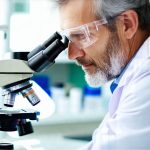Streams are vital components of our ecosystems, providing drinking water, supporting biodiversity, and offering recreational opportunities. However, stream health is frequently assessed based on visible signs of degradation – algal blooms, fish kills, excessive sediment, or obvious pollution sources. This approach often misses subtle but significant changes that indicate a problem long before these dramatic symptoms appear. Early detection is crucial for effective stream management and restoration, demanding methods capable of identifying issues when the water appears clear and life seems to be thriving. Relying solely on visual inspection provides an incomplete picture; a more comprehensive understanding requires monitoring parameters beyond what’s immediately apparent to the naked eye.
Traditional assessment often focuses on responding to problems rather than proactively preventing them. This reactive approach can lead to costly remediation efforts and prolonged ecological damage. A shift towards proactive monitoring, utilizing techniques that detect changes in water quality before visible symptoms manifest, is essential for preserving these valuable resources. The ability to identify subtle shifts indicates a stream’s resilience – or lack thereof – allowing targeted interventions before irreversible harm occurs. This article will explore methodologies for monitoring stream quality without relying on visual cues, focusing on both physical/chemical parameters and biological indicators.
Physical & Chemical Monitoring Techniques
Monitoring the physical and chemical properties of a stream provides foundational data about its condition. These characteristics are often the first to change when pollution or stress impacts the ecosystem. Parameters like temperature, pH, dissolved oxygen (DO), turbidity, conductivity, and nutrient levels offer insights into overall water quality and potential problems. Continuous monitoring is increasingly common, using sensors that automatically collect data at regular intervals. This provides a more detailed understanding of stream dynamics than infrequent grab samples.
The selection of parameters to monitor should be tailored to the specific context of the stream and potential sources of pollution. For example, agricultural areas may necessitate frequent nitrate and phosphate testing, while urban areas might require monitoring for heavy metals or road salt contamination. Beyond basic measurements, more sophisticated techniques like spectrophotometry can identify trace amounts of pollutants that would otherwise go undetected. Furthermore, understanding seasonal variations is vital; many parameters naturally fluctuate throughout the year due to changes in precipitation, temperature, and biological activity.
A crucial aspect of effective chemical monitoring involves proper calibration and maintenance of equipment. Sensors must be regularly checked against known standards to ensure accuracy. Data logging and analysis software are also essential for organizing and interpreting the collected information, identifying trends, and detecting anomalies that might signal a problem. Ignoring these details can render even the most expensive monitoring system ineffective.
Biological Indicators: Beyond Fish & Algae
While fish kills and algal blooms are visible signs of distress, they represent late-stage symptoms. Microscopic organisms – bacteria, invertebrates, and diatoms – offer earlier warnings about stream health. These bioindicators respond quickly to changes in water quality and can provide a more nuanced assessment than relying on larger, more conspicuous organisms. For example, the presence or absence of certain mayfly nymphs (Ephemeroptera) indicates good water quality; their sensitivity makes them valuable indicators of pollution stress.
Macroinvertebrate monitoring is a widely used technique. It involves collecting samples from stream beds and identifying the species present. The diversity and abundance of these organisms are then used to calculate biometric indices – scores that reflect overall stream health. Different index systems exist, tailored to specific regions and types of streams. Importantly, macroinvertebrate monitoring provides an integrated assessment of water quality over time, as many species have relatively long lifecycles.
Diatoms, single-celled algae found in virtually all aquatic ecosystems, are another powerful bioindicator group. Their sensitivity to pollutants makes them excellent for assessing historical and current water quality conditions. Diatom communities can be identified using microscopic analysis, and changes in their composition reflect shifts in stream chemistry. Analyzing diatom frustules (their silica shells) preserved in sediment layers provides a retrospective view of pollution events, allowing researchers to understand long-term trends and identify sources of contamination.
Advanced Monitoring Technologies & Data Analysis
The field of stream monitoring is rapidly evolving with the advent of new technologies. Remote sensing techniques, utilizing drones or satellites equipped with specialized sensors, can map water quality parameters across large areas quickly and efficiently. This allows for broad-scale assessments and identification of pollution hotspots. Environmental DNA (eDNA) analysis is another promising approach, detecting traces of genetic material shed by organisms in the water, providing information about species presence and abundance without requiring physical collection.
Data analysis plays a crucial role in extracting meaningful insights from monitoring data. Statistical methods can be used to identify trends, detect anomalies, and assess the significance of changes in water quality parameters. Machine learning algorithms are increasingly being applied to predict future conditions based on historical data and environmental variables. This predictive capability allows for proactive management interventions before problems escalate.
However, it’s important to recognize that technology is only a tool. Effective monitoring requires a well-defined sampling strategy, rigorous quality control procedures, and knowledgeable interpretation of results. Data should be integrated with other sources of information – land use patterns, historical pollution records, and local knowledge – to provide a comprehensive understanding of stream health and inform effective management decisions. Ultimately, the goal is not simply to collect data, but to translate that data into actionable insights for protecting these vital ecosystems.





















